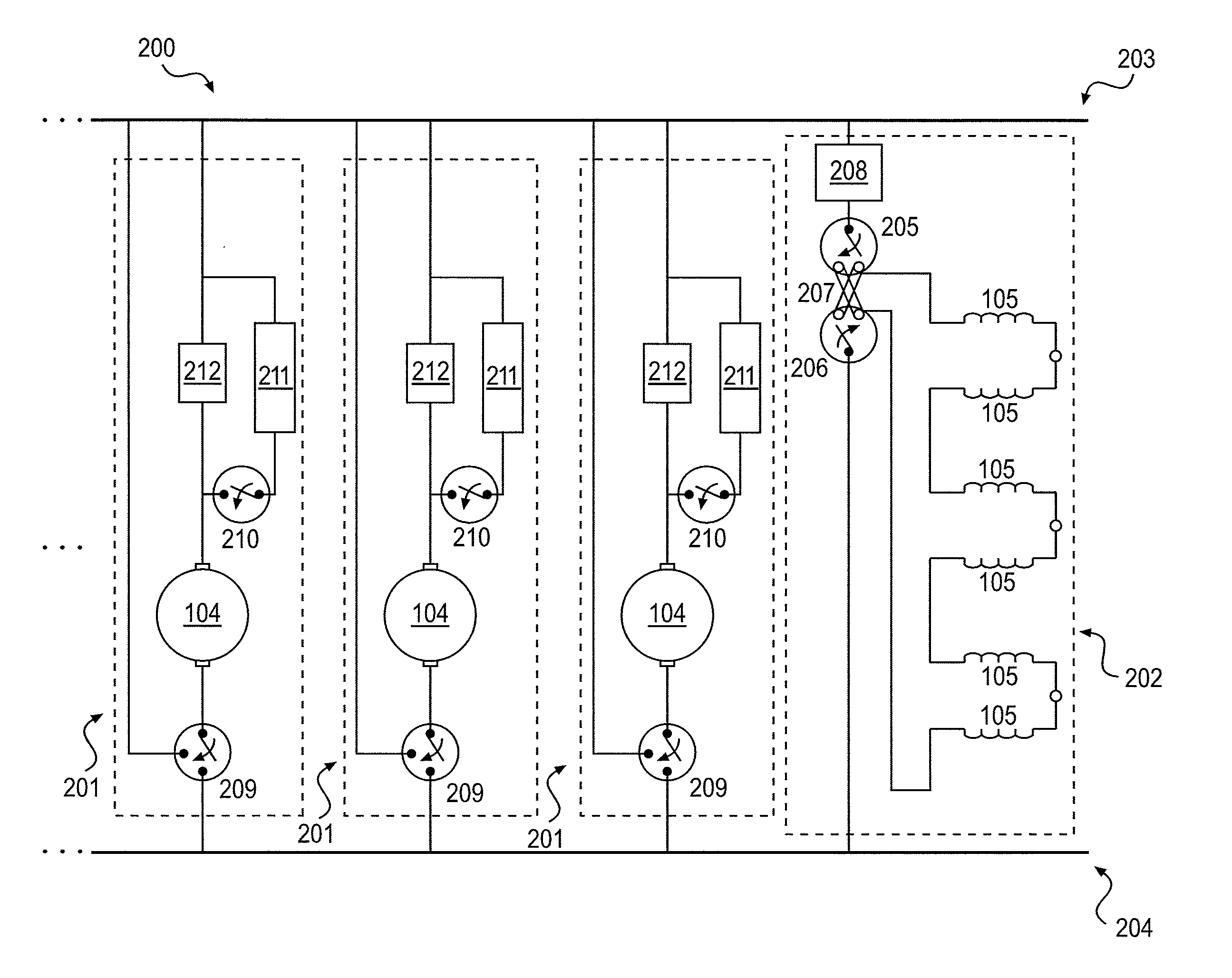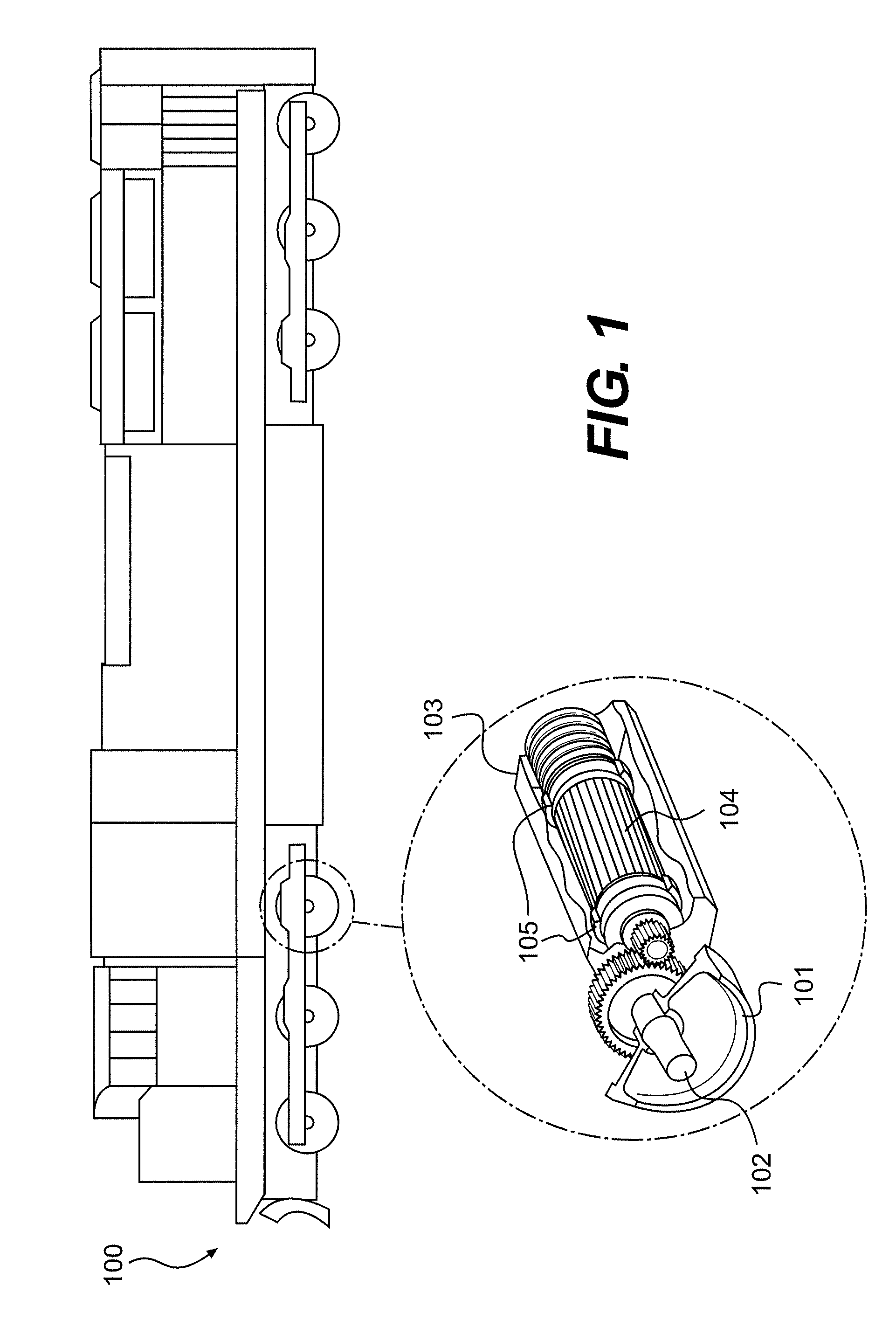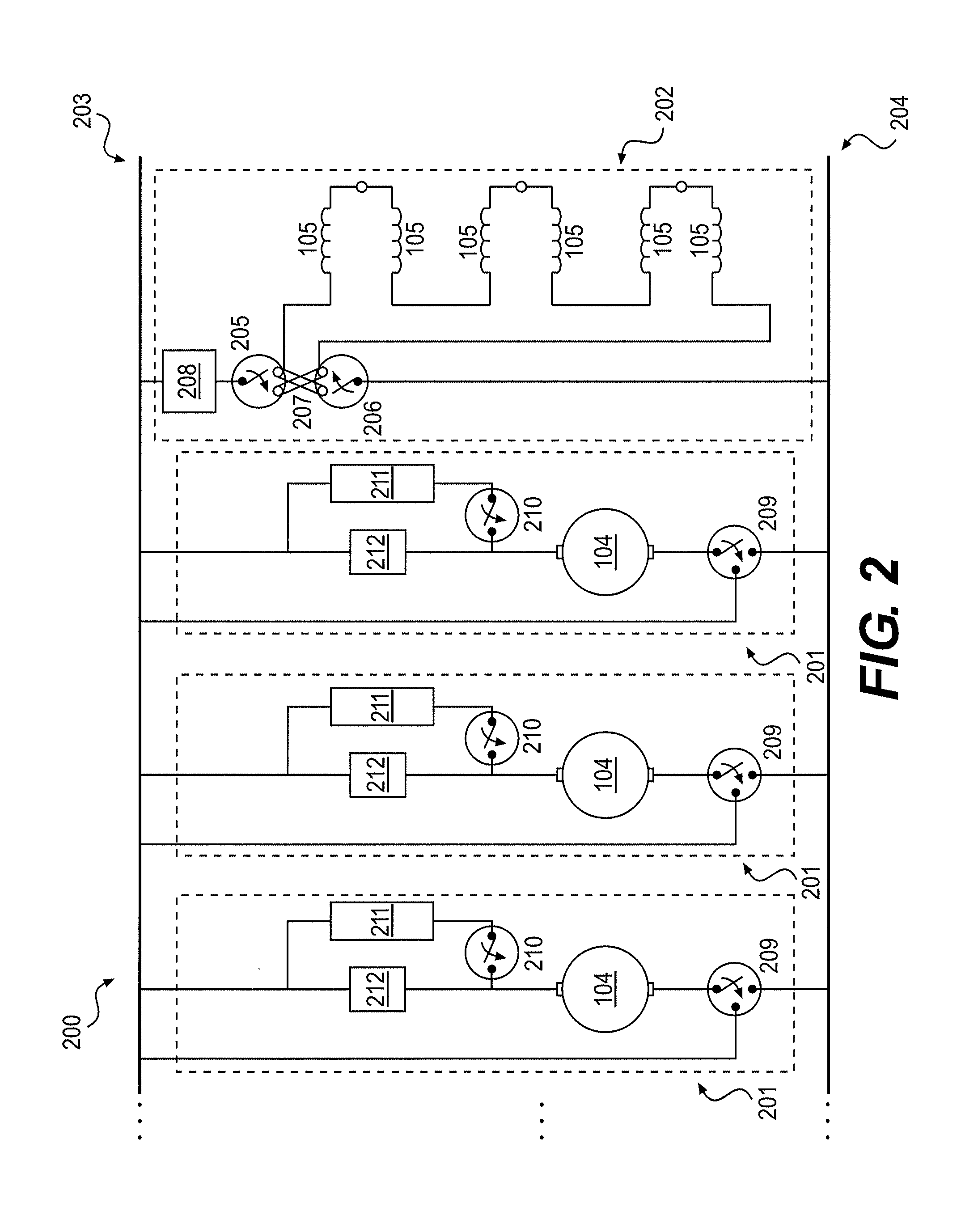Continuously variable dynamic brake for a locomotive
a dynamic brake and continuous variable technology, applied in the direction of motor/generator/converter stopper, dynamo-electric converter control, electric devices, etc., can solve the problems of requiring more frequent repairs of the braking system, unable to operate the dynamic braking system, and unnecessary wear on these parts, so as to reduce the effective resistance of the grid resistor
- Summary
- Abstract
- Description
- Claims
- Application Information
AI Technical Summary
Benefits of technology
Problems solved by technology
Method used
Image
Examples
Embodiment Construction
[0015]FIG. 1 illustrates an exemplary locomotive 100 in which systems and methods for dynamic braking may be implemented consistent with the disclosed embodiments. Locomotive 100 may be any electrically powered rail vehicle employing DC traction motors for propulsion. Furthermore, any electrically powered vehicle employing DC traction motors for propulsion could also incorporate the systems and methods for traction motor isolation consistent with the disclosed embodiments. According to the exemplary embodiment illustrated in FIG. 1, locomotive 100 may include six pairs of wheels 101, with each pair of wheels 101 attached to an axle 102 that is rotatably coupled to a traction motor 103. Traction motors 103 may each include an armature 104 and a field winding 105. As locomotive 100 uses a DC traction motor system, traction motor 103 may comprise separate circuits for armature 104 and field winding 105. FIG. 2 illustrates the relationship between armature 104 and field winding 105 with...
PUM
 Login to View More
Login to View More Abstract
Description
Claims
Application Information
 Login to View More
Login to View More - R&D
- Intellectual Property
- Life Sciences
- Materials
- Tech Scout
- Unparalleled Data Quality
- Higher Quality Content
- 60% Fewer Hallucinations
Browse by: Latest US Patents, China's latest patents, Technical Efficacy Thesaurus, Application Domain, Technology Topic, Popular Technical Reports.
© 2025 PatSnap. All rights reserved.Legal|Privacy policy|Modern Slavery Act Transparency Statement|Sitemap|About US| Contact US: help@patsnap.com



